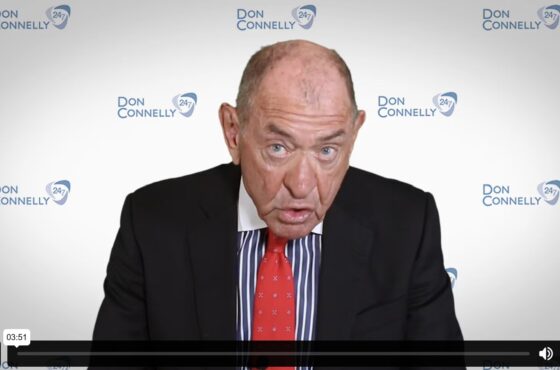Storytelling for Financial Advisors – Acquiring High Net Worth Clients through “Storyselling”
 Nowadays “storyselling for financial advisors” is a big search trend. I found a book with that title but I doubt that’s what people in the industry are looking for. My guess would be that they are after high net worth clients with yet another “modern technique”. Truth be told, storyselling is just a catchy name for good old storytelling that Financial Advisors so rarely master completely.
Nowadays “storyselling for financial advisors” is a big search trend. I found a book with that title but I doubt that’s what people in the industry are looking for. My guess would be that they are after high net worth clients with yet another “modern technique”. Truth be told, storyselling is just a catchy name for good old storytelling that Financial Advisors so rarely master completely.
As defined in an article on Entrepreneur magazine some time ago, “The concept of StorySelling™ boils down to this: People love a great story. And when you tell the right story about yourself and your business, you create the foundation for a marketing powerhouse or, in story terms, a blockbuster that’s vitally important when it comes to marketing to the affluent.”
Sounds about right, doesn’t it?
So today, fellow Advisor, I’d like you to think of ways how to improve your storytelling skills before joining the storyselling madness.
Here’s how to acquire high net worth clients through analogies and good old storytelling for Financial Advisors.
First, let’s agree on how using analogies and storytelling actually helps Financial Advisors acquire affluent clients.
When communicating with prospects and clients, they often don’t understand all of what you are saying. Not for some other reason but because they don’t speak your language – the matter of financial planning is a complex one and it takes a skilled communicator to explain it in a straight-forward way that clients would understand.
Here’s where stories come in – they help you to:
- Make the unfamiliar familiar.
- Make ideas memorable and shareable.
- Make others understand your mission and vision.
- Influence and persuade prospects and clients.
- Build strong relationships based on trust and likability.
Prospects switch off when you’re talking numbers. They don’t care whether you’re talking funds or variable annuities; they simply want to know how you can make their life better. Share your personal experiences and build trust. There’s no better way to do just that than using stories.
After all, storytelling has been a communication method in business and life for ages, and no matter how we call it, stories have a powerful impact on how humans think, feel and react. Make storytelling an integrate part of your selling strategy and you’ll be employing the storyselling tactic which we started discussing with this post anyway!
Hear Don Connelly explain how effective storytelling will differentiate you from 99% of the Financial Advisors out there.
Now that we all agree on the importance of storytelling for financial advisors, let’s see what the single most important story is that you should use (if you want to succeed as a Financial Advisor, that is).
Why and how to develop your “Who I Am” story
As mentioned earlier, people love a great story. And when you tell the right story about yourself and your business, you lay a solid foundation to connect with clients on an emotional level. This is especially true for affluent prospects who are so used to people constantly trying to sell them something.
That’s right – the single most important reason for you to develop a “Who I Am” story is that it enables you to establish an emotional connection with high net worth prospects.
Here are two posts which would set you for developing a killer “Who I Am” story:
What other stories you should use
Most of all use simple stories.
The strongest power of storytelling is that it helps you simplify your message. So it wouldn’t make sense to use complex stories, right? Telling simple stories will hopefully prevent you from meandering and falling into our industry trap of making an already difficult subject more difficult.
And remember that stories don’t need to be long to be effective either.
You can use stories with clients to explain and communicate various key messages – for example:
- Why it is important to look at the future potential of an investment instead of focusing on past performance.
- Why they need you as their Advisor.
- How volatility doesn’t change their long-term goals.
Start with these 5 simple stories you can use with prospects, clients and even your team of Advisors to effectively communicate your message.
Don’t forget that stories can help you overcome objections, too!
Hear Don share a story explaining to clients why ‘thinking it over’ is not really an option and what their real concern is.
Throw some analogies in the mix
Analogies are like little stories wrapped around a message. Use them. Help your listener connect the dots. Link what you are saying to something they already know. This is the best way to put a complex matter in terms that the client understands.
Similarly to storytelling, you can use analogies with clients to explain and communicate various key messages – for example:
- To illustrate your importance.
- To inspire prospects to follow you.
- To convince clients to stick to the plan.
- To motivate prospects to act now and start investing now.
- To explain diversification and spreading risk.
Here are 5 analogies you can and should use with prospects and clients to better communicate your message.
How to craft a good story
I’ve got you on the hook with storytelling and analogies, haven’t I?
So let me also guide you through the steps of creating a great story so you can have your own arsenal of stories to use with prospects, clients and fellow Advisors.
In a 2012 article for Inc.com, Geoffrey James wrote about a seven-step process for telling a great story.
Step 1: decide what message you want the listener to take away.
Step 2: employ an ending to the story or analogy that verifies the takeaway.
Step 3: move the story in the right direction by giving it life. Discuss the people involved, the location where things take place and when the story takes place.
Step 4: put some meat on the story’s bone by adding rich context.
Step 5: introduce the goal you seek and the obstacles confronting you.
Step 6: describe the decision that allowed someone to overcome the obstacles.
Step 7: Now we finish the story and invoke our takeaway.
Hear Don share these seven steps but more importantly, see how he puts them into practice and builds his Airline Pilot Analogy, following exactly these steps.
(If you want to skip the 7 steps explanation and see how Don uses them to build his story, go directly to 1:20 min.)
This is how you can build a great story of your own and communicate an incredibly effective message.
Some more stories and analogies to use with clients
Before I leave you, I’d like to share some of Don’s most popular stories – use them or pick them apart to find why they are so successful. Use your findings to construct your own stories and analogies with the super power to influence and persuade high net worth clients not only to work with you, but to stick to the plan for the long run.
- Do not replace your good furniture analogy
A lot of times clients will see something that they don’t own, and they think they ought to own. They want to sell what they do own to go chase what they shouldn’t own, but they think they should own. You’ve been through this scenario a million times. Here’s an analogy you can use with your clients in such cases.
- 3 analogies on long-term investing
Investing is a long-term business. You know that, clients know that – and yet, many of them are hesitant, especially in the beginning. Use these three analogies to convince them to commit to the long-term nature of investing right from the start.
- The 12 inch ruler analogy
This is my favorite analogy to use with clients who have a tendency to check the daily newspaper to see how their investments are doing. Watch the video on YouTube.
And finally, tell a vision story to get prospects on board with investing.
The only way people can understand is through experience, having the benefit of hindsight. But new clients don’t have the luxury of experience. They don’t know the benefits of long-term investing. So it’s up to you as their advisor to get them to understand, and the best way to do this is to tell them stories.
Markets change frequently but the reasons your clients invest don’t. Always remember their goals and make these goals real and achievable to keep clients focused on the long run. Investing is simply a route to getting to where they want to be.



